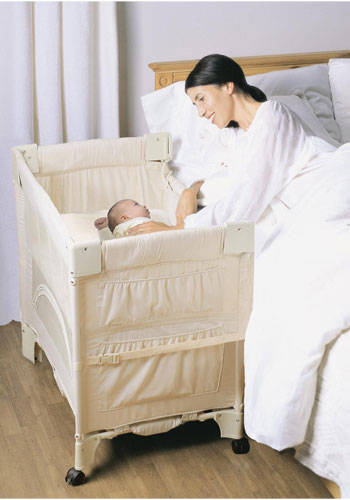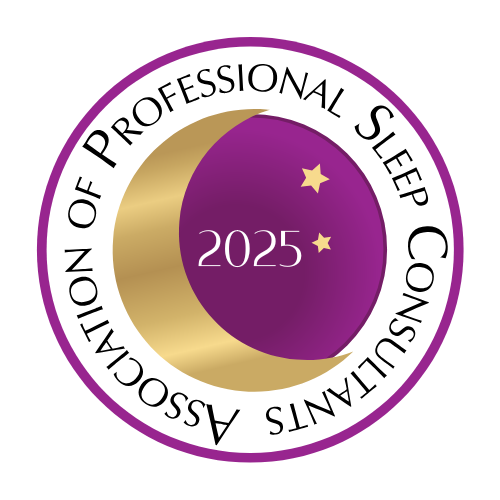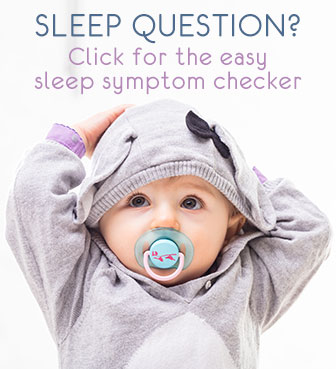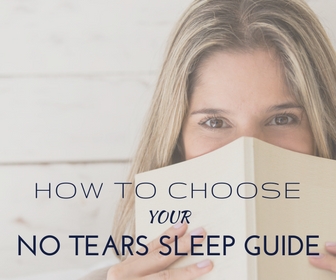A Cosleeper Keeps Your Baby Close And Safe
Author Name: Heidi Holvoet, PhD
Medical fact-check: Dr Leah Alexander, M.D., F.A.A.P.
A cosleeper, bedside crib, or sidecar bassinet, gives you all the benefits of cosleeping plus the extra safety and independence of a separate bed. That's an excellent balance between the critical ingredients for developing healthy sleep skills:
- you being near for reassurance and easy feeds without interrupting sleep and
- baby having her own safe independent place
Disclaimer: Unsafe co-sleeping can kill your baby. The author(s) of this article are not responsible for your child's safety: applying safety guidelines properly and appropriately for your unique situation, and ensuring your baby's safety is your own responsibility (
full disclaimer
).
Using a bedside cosleeper or sidecar bassinet appears to solve the dilemma of having a safe place for an infant to sleep while being close to the parent. So far, there is not enough research or data available for major pediatric health authorities to fully endorse their use. Please read this article on
Bedside Co-sleeper Advice
on PediatricEducation.org
.
Why choose a bedside cosleeper or sidecar bassinet?

How it works: it looks like a classic baby
bassinet, where
one
side is dropped, and shifted to your bedside.
That means you have your
baby within
reach
for feeding or comforting at night. But she is also
in a safe space
, her
own space.
The general co-sleeping benefits are:
- Baby sleeps better : just like all of us, a baby sleeps better when she feels safe and secure.
- Baby is safer : in those first months, your presence when baby sleeps is a top protector in the battle against SIDS, or cot death.
- Parents sleep bette r: most parents worry less and therefore sleep better with baby nearby.
-
No-fuss night
feedings
: whether
breast
feeding
or
bottle
feeding
there is much less fuss to get the feeding done.
That means you can both stay in a dozing state, which makes it easier to go back to sleep afterwards. This is critical to develop healthy sleep patterns.
And with the sidecar crib you also have these added benefits:
- Crib safety : many parents hesitate about cosleeping because of suffocation danger and the alleged risk of SIDS. With a cosleeper, your child is in her own safe place, with no risk of a parent rolling on top of her there, in line with the cosleeping safety guidelines. Or the risk of rolling off the bed.
-
Baby practices sleeping independently, i.e. self-soothing to sleep: many parents avoid cosleeping
because they fear baby will never learn to sleep alone. The bedside arrangement
avoids this.
The relative sleep independence can be an important help later on when sleeping alone is high on the agenda. - Baby is comfortable: as snug as lying next to mom or dad is, many babies sleep restlessly when truly cosleeping. Being in their own bed gives them all the comfort they need to sleep deeply.
- Mom and dad are comfortable : no struggling for your space in bed or curling up to the side: you each have enough space to sleep well.
- Fits in small bedrooms: if you have limited space in your bedroom, the cosleeper takes much less space than a standalone crib.
- Well suited for twins too! A full size cosleeper crib is ample and safe for two babies.
How to choose
There is no way around the price tag of a good bedside crib. But
it's not necessarily much more expensive than a good quality regular crib. And for
most of us, it is worth every last cent because of the positive
sleep experience and long-term sleep skills learned.
Especially the
convertible ones are cost-effective, since they last
well into toddler hood and sometimes beyond (like the one that converts to
a bench (!)).
When shopping around for your preferred sidecar bassinet or cosleeper crib for your baby, you may find it helpful to keep this checklist in mind:
- A good bedside bassinet or crib is (easily!) convertible to a regular crib, play pen or play yard once you all grow out of sleeping in the same room.
- Make sure it is adjustable to your specific bed height and mattress size, if necessary with leg extensions
- A built-in storage compartment is not essential but can be very handy to keep diapers, wipes and the likes at hand.
- If you're on the move often or have limited space, consider a travel version (like the Arm's Reach Mini Convertible)
Article Author: Heidi Holvoet, PhD - Founder, senior sleep consultant

Heidi Holvoet, PhD, is the founder of the Baby Sleep Advice website and movement, an award-winning author, baby & toddler sleep consultant with 17+ years experience as well as a certified lactation counselor.
Over the years, Heidi has received several awards inluding a Mom's Choice Award (MCA) and National Parenting Awards (NAPPA) for her Baby Sleep Advice website, programs and books. Also, Baby Sleep Advice was awarded "Most Trusted Infant's Sleep Solutions Company 2023" in the Benelux Enterprise Awards 2023.
Heidi continually conducts personal research and participates in continued education and in that way stays up to date with current scientific and pyschosocial infant care.

She is also a member of the Association of Professional Sleep Consultants of which she was one of the earliest contributors. She obtained her PhD degree in physics at the University of Ghent in Belgium.
Heidi is passionate about helping babies and their parents sleep more and better, with her trademark holistic and truly-no-tears approach that has been proven and praised time and again by parents worldwide to be effective and truly no-tears. Respect for you as a parent and your baby, is at the heart of Heidi's warm and kind support. Her approach always keeps in mind a baby's needs and abilities at any given age, is based on pediatric science and the most up to date knowledge in infant care and sleep science.
As well as the award-winning baby sleep programs, Heidi offers popular 1:1 consults and easy-access 30-minute SOS Sleep sessions.

Self Soothing
by Heidi Holvoet, PhD

What to do when your baby wakes every hour
by Heidi Holvoet, PhD

Separation Anxiety
by Heidi Holvoet, PhD

Colic
by Heidi Holvoet, PhD

Why does my baby wake up every hour?
by Heidi Holvoet, PhD


